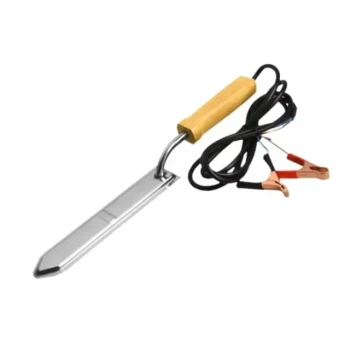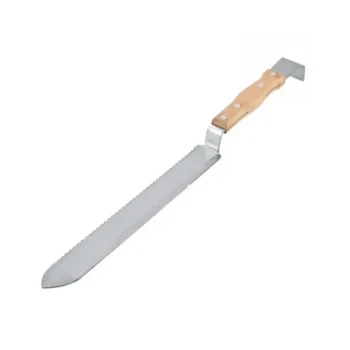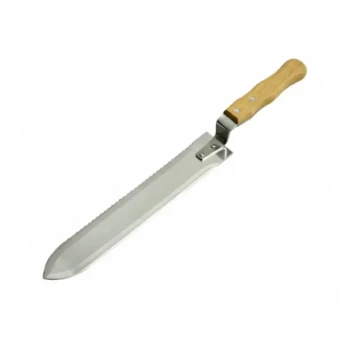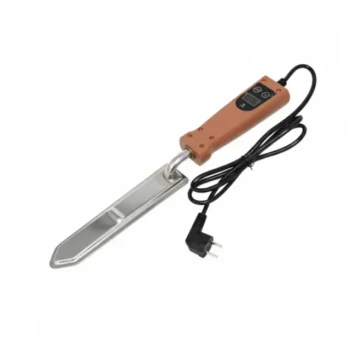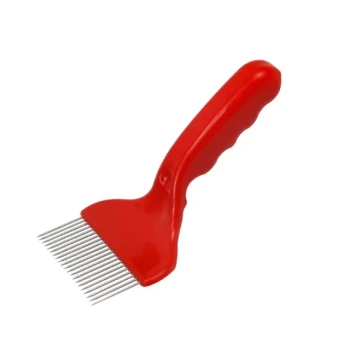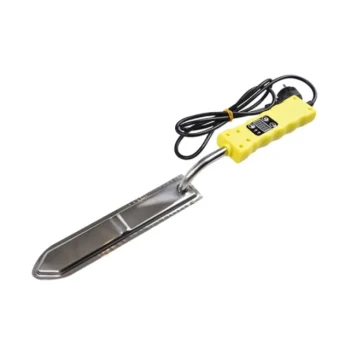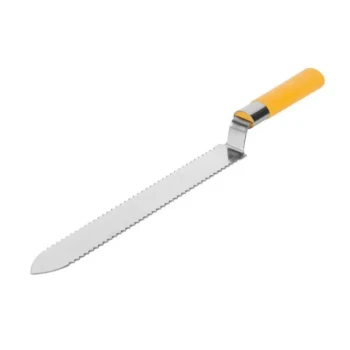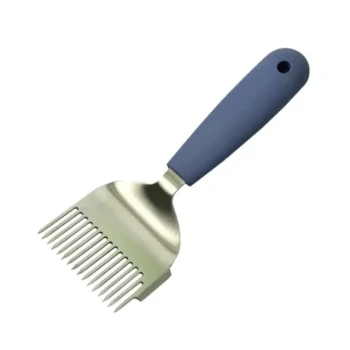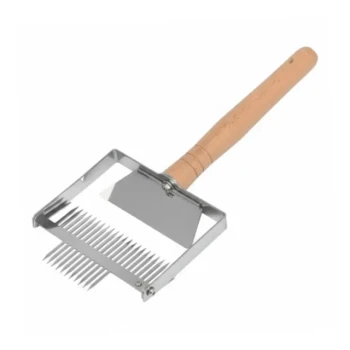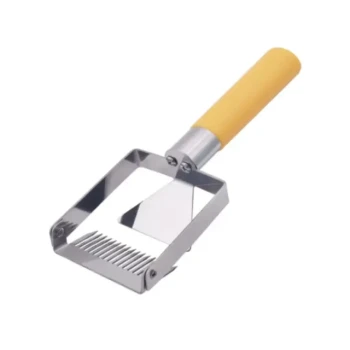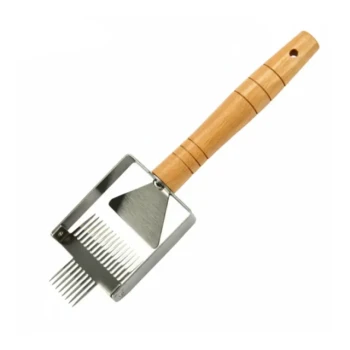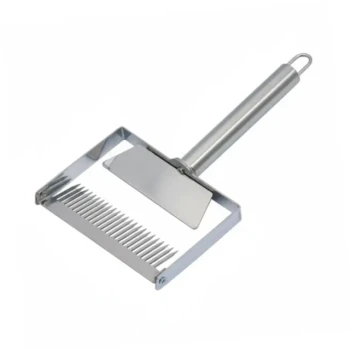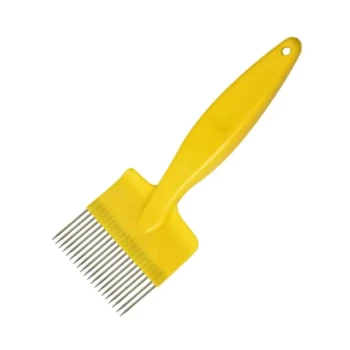In essence, electric uncapping tools use an internally heated blade to simultaneously melt and slice through the beeswax cappings on a honeycomb frame. The constant, controlled heat is the key to their function, allowing for a much faster and smoother uncapping process compared to using a non-electric, or "cold," knife. This clean cut is what allows honey to flow out freely during extraction.
The true advantage of an electric uncapping tool lies in its efficiency. By using heat to do most of the work, it dramatically reduces the physical effort and time required for harvesting, but this speed must be balanced against the need for proper technique to avoid damaging the comb or overheating the honey.
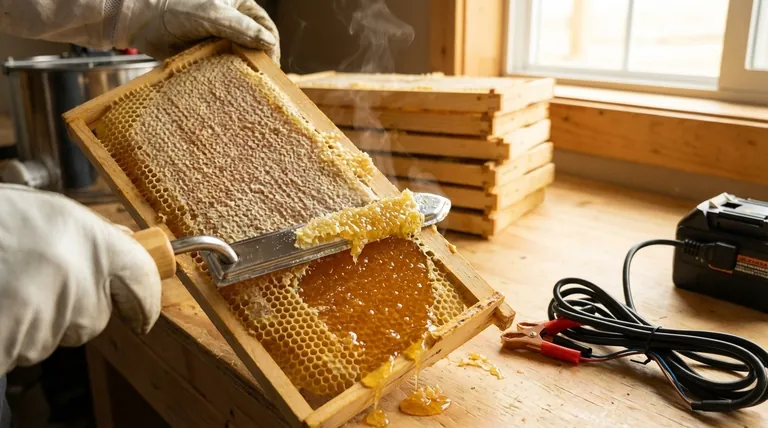
The Core Mechanism: Constant, Controlled Heat
The entire function of an electric uncapping tool, whether a knife or a plane, revolves around its ability to maintain a consistent temperature hot enough to melt wax on contact.
How the Heating Element Works
Inside the blade of the tool is a sealed electrical heating element. When plugged in, this element heats the entire metal blade to a preset temperature, which is typically hot enough to slice through beeswax with minimal resistance.
Higher-quality models often include a built-in thermostat. This component regulates the temperature, preventing the blade from getting excessively hot, which could scorch the honey and darken the wax.
The "Melt and Slice" Action
Unlike a cold knife that relies purely on sharpness and pressure, a heated blade performs a dual action. It melts the very thin layer of wax it touches while the sharp edge slices through it.
This melting action acts as a lubricant, dramatically reducing the drag and tearing that can occur with a cold knife. The result is a cleaner cut, less damage to the underlying comb structure, and a less strenuous experience for the beekeeper.
Comparing Electric Tool Types
While they operate on the same principle, the two main designs—knives and planes—are suited for slightly different techniques and outcomes.
The Electric Uncapping Knife
This is the most common design, featuring a long, straight blade resembling a bread knife. The beekeeper typically holds the frame vertically and slices downward, shaving off the cappings in a single sheet.
Its length makes it versatile and effective even on frames with slight irregularities or low spots in the comb.
The Electric Uncapping Plane
An uncapping plane features a shorter, wider blade and is designed to be skimmed horizontally across the surface of the comb. Many models have adjustable guides on the sides that help maintain a consistent cutting depth.
On perfectly flat and even frames of honeycomb, a plane can be incredibly fast. However, it is less forgiving on uneven comb compared to a knife.
Understanding the Trade-offs
While highly effective, electric tools introduce a new set of considerations compared to simple manual methods like forks or cold knives.
Benefit: Speed and Efficiency
This is the primary reason beekeepers upgrade. For anyone harvesting from more than a few hives, an electric knife can reduce uncapping time by more than half, significantly streamlining the entire extraction day.
Drawback: The Learning Curve
Using a hot knife effectively requires practice. Moving too slowly can scorch the honey, while moving too quickly or unevenly can result in a messy cut that requires a second pass. Learning to control the depth is crucial to avoid cutting away valuable honey and comb.
Drawback: Safety and Power Requirements
These are hot, sharp instruments that demand respect. Accidental burns are a real risk. They also require a nearby power source, which can be a logistical challenge in some honey houses or outdoor setups.
Drawback: Risk to Honey Quality
If the tool lacks a good thermostat or is used improperly, it can overheat the honey it comes into contact with. This can increase HMF (hydroxymethylfurfural) levels in the honey and alter its delicate flavor profile.
Is an Electric Uncapping Tool Right for You?
Choosing the right tool depends entirely on the scale of your operation and your primary goals during the harvest.
- If you are a hobbyist with just a few hives: A simple cold knife or an uncapping fork/scratcher is often more practical and cost-effective.
- If you are scaling up to 10+ hives: An electric uncapping knife offers a significant boost in speed and greatly reduces the physical strain of harvesting.
- If you prioritize maximum speed on uniform frames: An electric uncapping plane can be the most efficient option, though it is less versatile than a knife.
Ultimately, understanding how these tools use heat to your advantage is the key to a faster, cleaner, and more enjoyable honey harvest.
Summary Table:
| Feature | Electric Uncapping Knife | Electric Uncapping Plane |
|---|---|---|
| Blade Design | Long, straight | Short, wide |
| Primary Use | Vertical slicing on various frames | Horizontal skimming on flat frames |
| Best For | Versatility, uneven comb | Maximum speed on uniform comb |
| Key Consideration | Requires practice for depth control | Less forgiving on uneven surfaces |
Ready to upgrade your honey harvest? As a trusted supplier for commercial apiaries and distributors, HONESTBEE provides high-quality, reliable electric uncapping tools designed for efficiency and durability. Our wholesale-focused operations ensure you get the equipment you need to scale your productivity. Contact our team today to discuss your beekeeping supply needs and streamline your next harvest!
Visual Guide
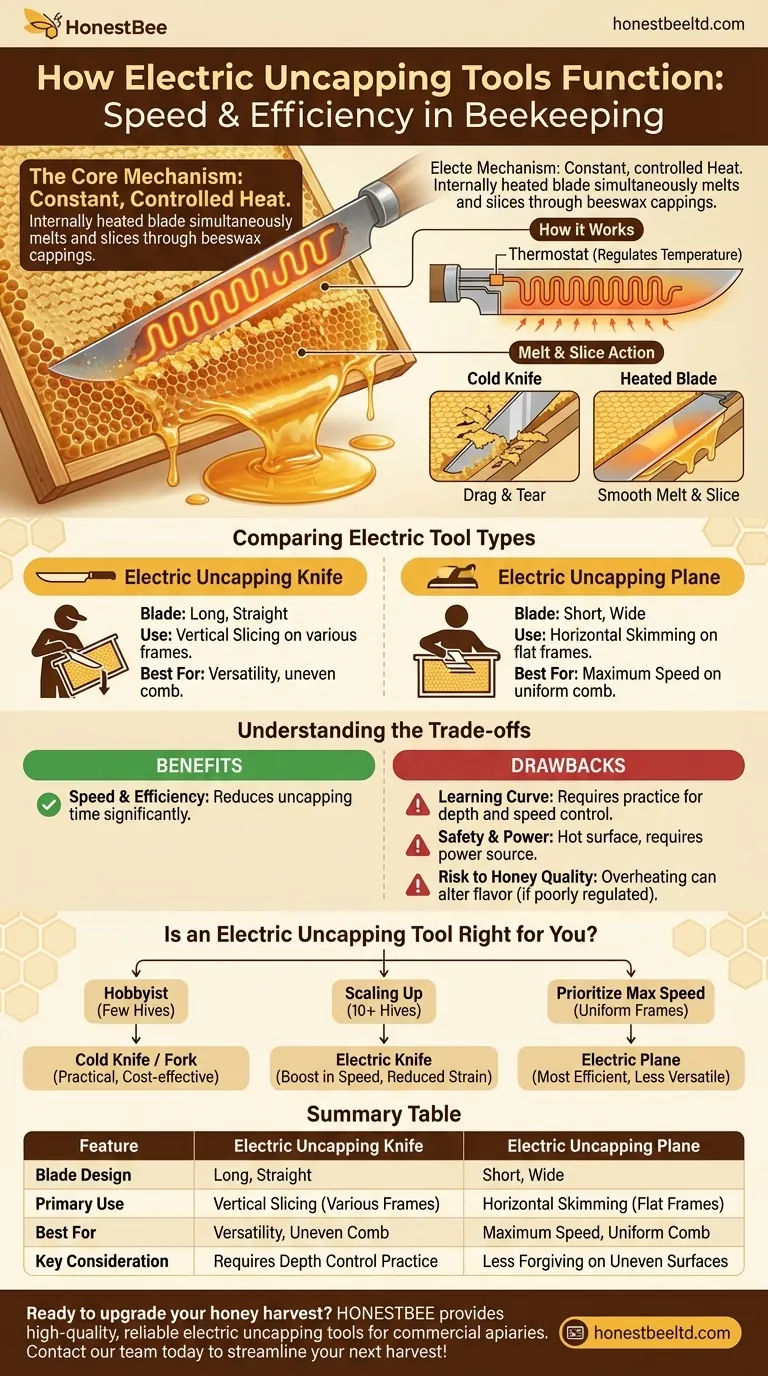
Related Products
- Professional 12V DC Electric Uncapping Knife for Beekeeping
- Electric Heated Honey Uncapping Knife for Beekeeping
- Professional Z-Shaped Multi-Function Uncapping Knife for Beekeeping
- Electric Hot Honey Uncapping Knife with Thermostat
- Honeycomb Uncapping Knife for Apiculture
People Also Ask
- What is the use of an uncapping knife? Master the First Step of Honey Harvesting
- How to clean an uncapping knife? Master the Hot-Knife Method for Easy Maintenance
- What is the use of uncapping knife in apiculture? Essential for a Clean, Efficient Honey Harvest
- What is the use of an uncapping knife? Essential for a Clean & Efficient Honey Harvest
- How are honey frames prepared before extraction? Master the Hive-to-Honey-House Process
